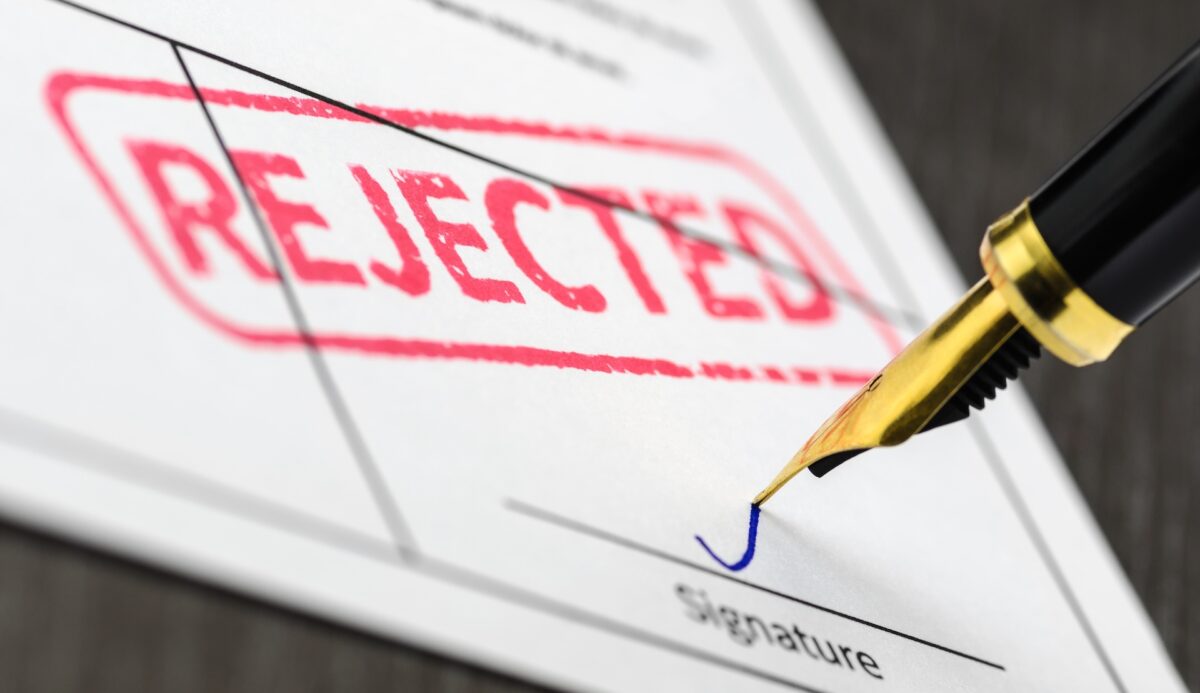A bed bug infestation is no laughing matter. In many states, it’s standard for landlords to add a lease clause holding tenants responsible for bed bugs that come into the apartment during their rental period. As a renter, you need to know how to protect yourself from pest-related liability. That’s why you should learn to spot these five signs of bed bugs, and what to do about a suspected bed bug problem in your “new” apartment.
You might have bed bugs if…
You’re waking up with itchy, red bumps on your skin.
Bed bugs feed on the blood of humans and animals, and they come out to feed at nighttime. As you snooze, they feast – often leaving you with itchy welts on any areas of skin that were exposed. You may write off the bumps as mosquito bites at first until you notice other signs of bed bugs. Some people may not exhibit any symptoms from bed bug bites, so a lack of welts does not necessarily mean a lack of bed bugs!
(One positive thing to note: In general, bed bugs have not been found to carry diseases. So, there’s not much they can give you besides the heebie-jeebies!)
You see red stains, dark spots, or brown streaks on your sheets.
Markings on your bedding can be a significant indicator that bed bugs have moved into your apartment. Small red bloodstains are often left from their bites, while dark-colored spots are their droppings. Light brown streaks created by their urine are sometimes visible on light-colored sheets. If you’ve woken up with any suspicious-looking bumps, the first thing you should do is take a close look at your sheets.
You’ve spotted a bed bug.
An obvious sign that you have bed bugs in your apartment is, well, seeing a bed bug! However, many renters don’t know what they’re looking at and may write off a bed bug as a harmless, lone intruder. But be advised, bed bugs have impressive reproductive capabilities—so spotting a single pest may be a sign of an impending infestation.
But, how can you tell if the bug in your bed is a bed bug or not? Keep in mind that bed bugs are a reddish-brown color, and they can range in size from the size of a grain of rice to the size of a pea. Their most distinguishing feature is the horizontal stripes that go down their bodies.
You notice a musty odor on your bedding.
The pheromones released by bed bugs have a distinct odor. So, when you’ve got an invasion of these pests in your space, you won’t be able to miss it. The smell is comparable to a damp, mildewy towel or a stale bathroom. The unpleasant scent may be noticeable when you enter a room, or you might only sense it when you get in your bed for the night. If your space is otherwise clean, but you can’t seem to get rid of that middle school locker room smell, you may have bed bugs in your apartment.
You’ve found their hiding spot.
Bed bugs don’t create any nest or web, but they do tend to gather in a communal hiding spot. If you suspect you have bed bugs, inspect the nooks and crannies around your bed, from spaces in the headboard and bed frame to the box spring. Their hiding spots are typically covered in stains, skin castings, and even potentially eggs. You may their odor gets stronger around the place where they gather, as well.
Bed bugs can pose a huge problem for apartment dwellers living in close quarters, and you may be wondering how the pesky things spread. Can bed bugs travel through apartment walls? Not exactly, but they can easily crawl underneath walls and doors to move from room to room and apartment to apartment. They can also “hitchhike,” traveling on clothing, furniture, bags, and so on.
Reduce your risk of a bed bug infestation by putting a protective cover on your mattress, vacuuming regularly, and sealing cracks around your doors and baseboards. Be wary of buying secondhand furniture such as couches and used beds — since they may contain hard-to-spot pests. Instead, when you need temporary furniture for the duration of your lease, consider renting bedroom and living room staples from a reliable furniture rental company. And in communal laundry rooms or laundromats, don’t let your clothing touch anyone else’s, and hold off on folding until you’re home.
My apartment has bed bugs, what are my rights?
If you suspect or have discovered bed bugs in your apartment, you must let your landlord know immediately – ideally ASAP via phone, as well as in writing. Your landlord should then hire a professional exterminator to inspect and treat the apartment. During the inspection, the exterminator can typically determine when the infestation occurred – most importantly, if it occurred before or after you moved in. If the landlord does not take steps to address the problem, you may have the right to withhold rent or break your lease, depending on your state’s law.
Currently, many leases include a “bed bug clause,” so it’s essential to read yours carefully. This clause often states that the unit is bed bug-free at the time of move-in and that the renter will be held liable for bed bugs found in the unit during or after their tenancy. Bed bug clauses also spell out renter’s obligations concerning when and how to report signs of bed bug infestations. These lease addendums typically make tenants responsible for infestations discovered post-move-in. Protect yourself by looking out for any signs of bed bugs and documenting them when you fill out your move-in inspection checklist.
Tell Your Old Apartment to Bug Off!
Does a bed bug infestation have you thinking about moving out before your lease ends? We don’t blame you. Start your search for a pest-free pad with ApartmentSearch.


